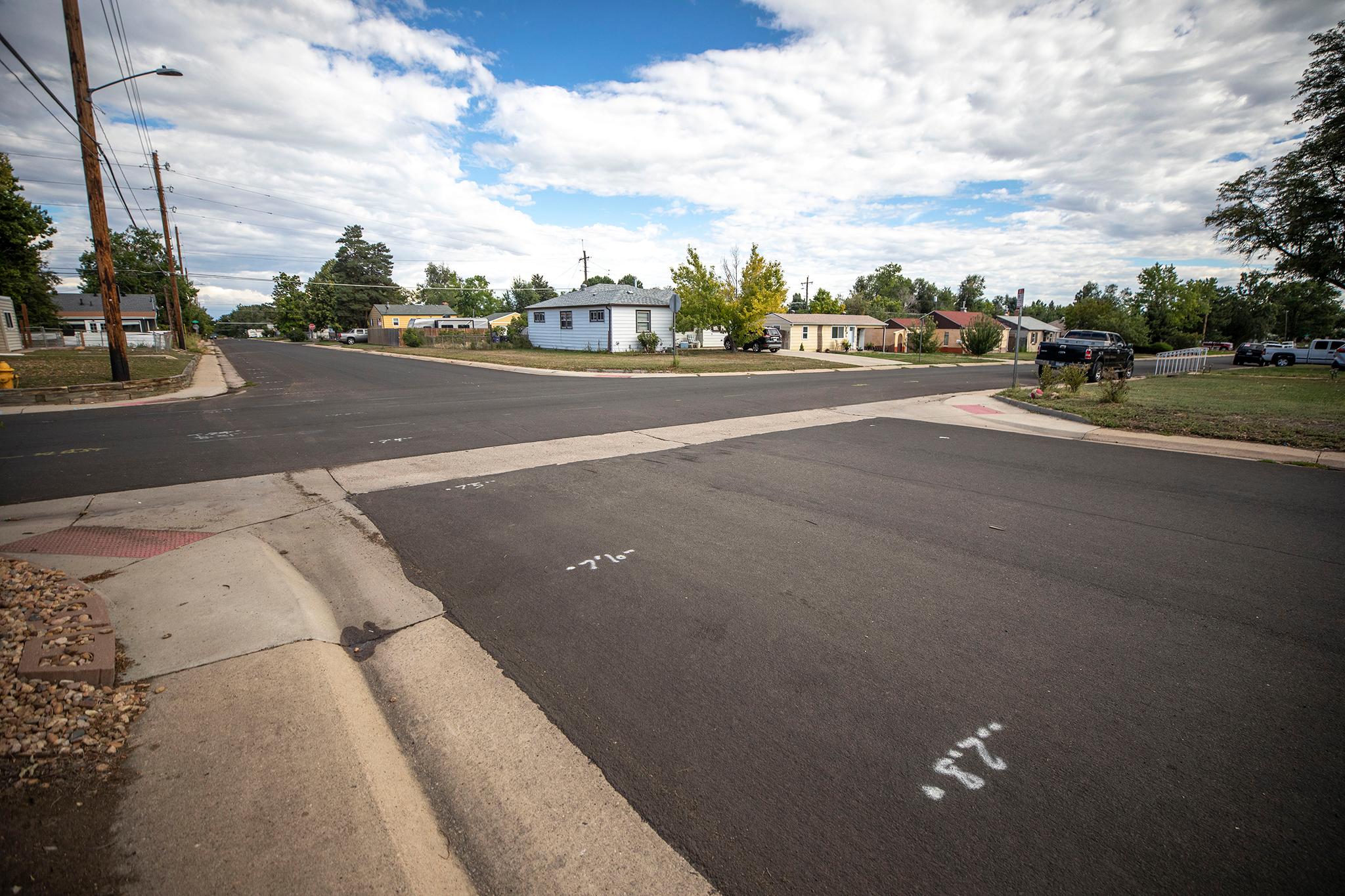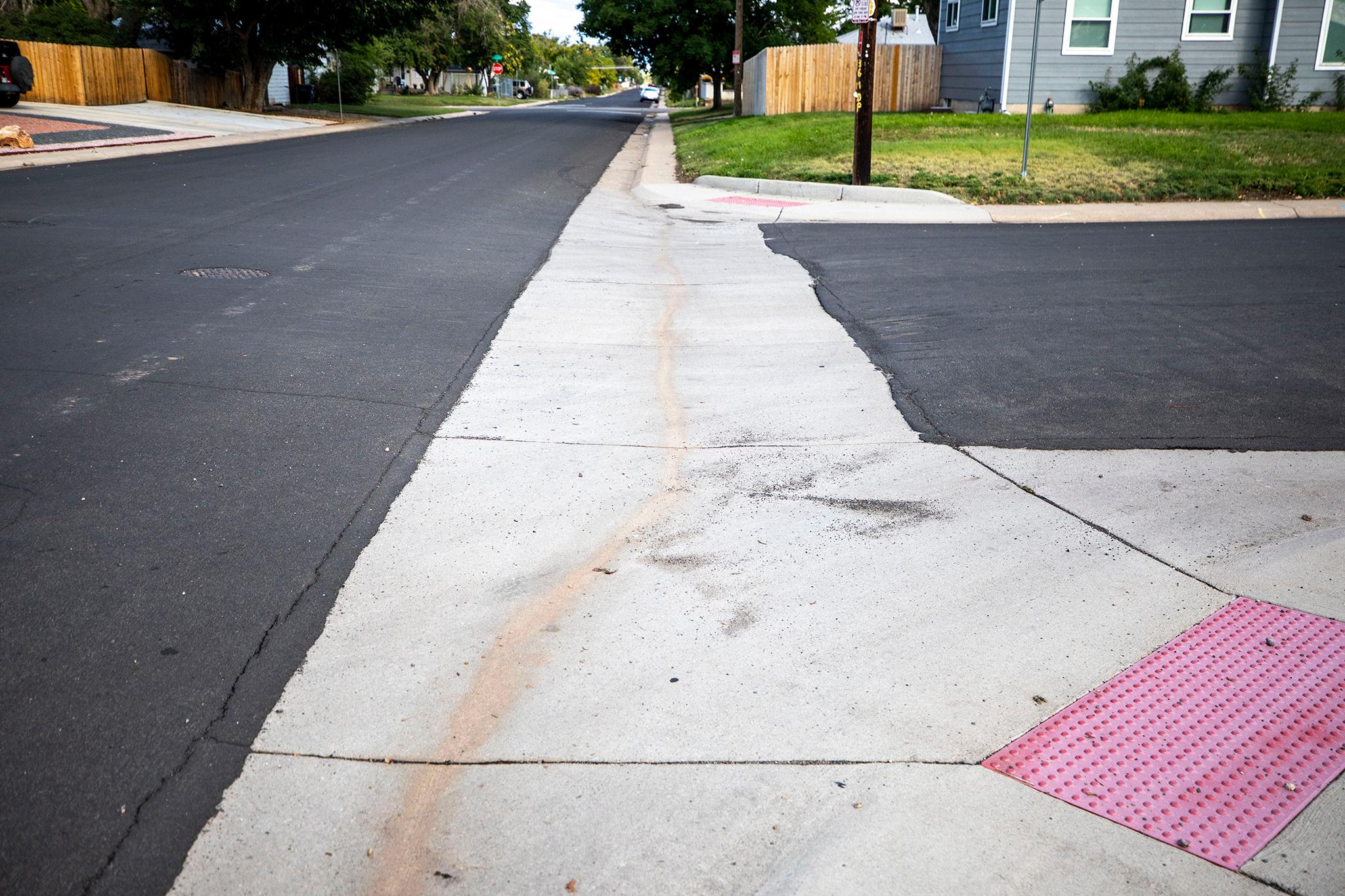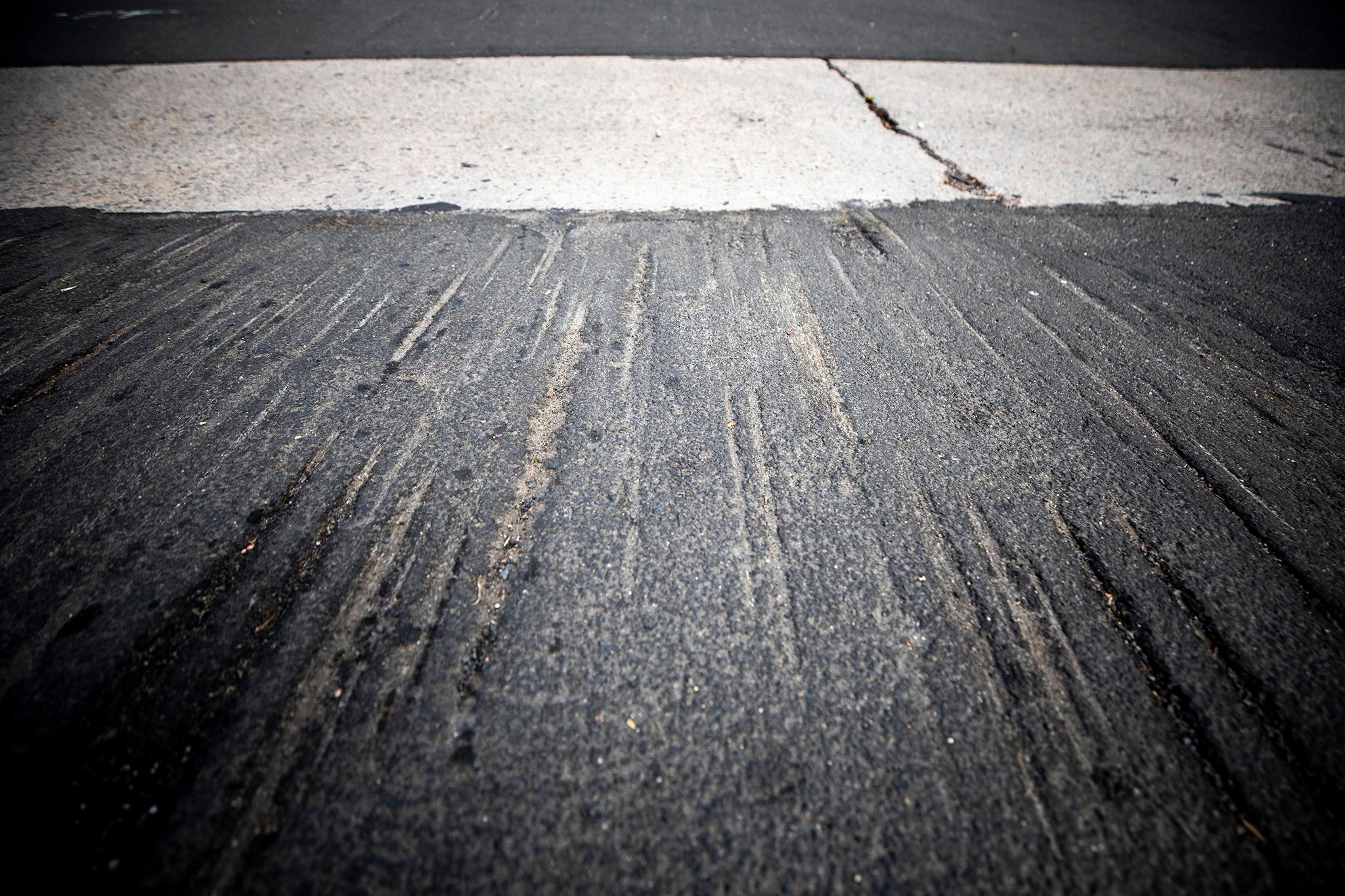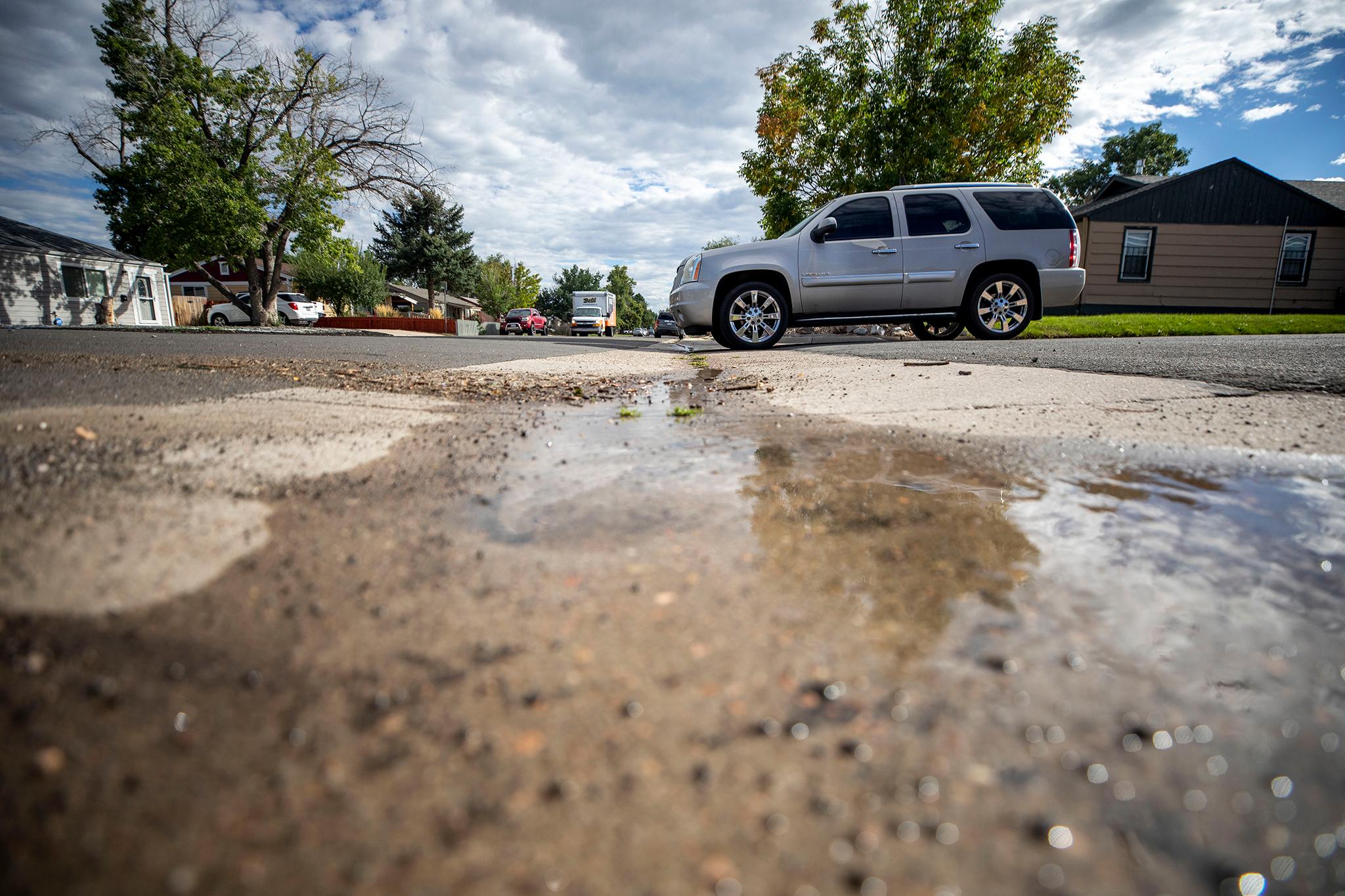Have you ever been driving through Denver and bottomed out your car on one of those intersection dips? Sometime between cursing your leaded foot and city infrastructure, did you wonder: What are those things anyhow?
Denverite reader David S. had a similar question: "What is the origin of Denver's slanted curbs? There are so many intersections with "dips" (big humps)? Was it to slow down cars?"
We reached out to the Department of Transportation and Infrastructure to find out why there are so many dips in Denver, and why they were first installed.

Those dips...or humps...or slanted curbs are called cross pans, DOTI spokesperson Vanessa Lacayo told Denverite.
And they are not speed bumps.
"Can't say for sure when Denver started using cross pans," she wrote, "but they've become an effective tool for improving stormwater drainage in particular locations."

So how do they work?
"The cross pan cuts across the crown of a street to keep the water flowing across the street to the inlets tied to our underground pipe systems that carry runoff to local creeks and gulches," she explained.
These days, DOTI is using cross pans to replace the city's underground siphon systems installed back in the 1950s and '60s.
Apparently, those old systems cause upkeep headaches for the agency.
"The siphon system collects water at an intersection, taking it underneath the intersection into a pipe," Lacayo wrote. "In bigger storm events, the stormwater will flow in one side of the siphon and out the other, but when the rain stops (or in smaller storm events when there's no force of water to flush the water out of the pipe), the stormwater stays in the underground pipe connected to the two inlets. We then have an operations crew assigned to regularly vacuum the water out of the siphons, so we're replacing this high-maintenance siphon system with the lower-maintenance cross pan that moves stormwater more efficiently."

DOTI has 25 locations where the agency plans to replace the siphon systems with cross pans in the next couple of years.
They will be added to 12th Avenue and Clermont Street; 26th Avenue and Madison, Milwaukee and St. Paul streets; 27th Avenue and Clayton, Filmore, Milwaukee and St. Paul streets; 29th Avenue and Dahlia, Eudora and Leyden streets; Arizona Avenue and Irving Street; Illiff Avenue and Bannock, Cherokee and Lincoln streets; Louisiana Avenue and Canosa, Clay, Irving, Osceola, Perry, Wolff, Xavier, Yates and Zuni streets plus Patton Court.
How does the city decide where to place cross pans?
"Denver only uses cross pans on local streets that have lower vehicle speeds, because they do create that little bit of a dip in the road, and we prefer to install cross pans where we have stop signs," Lacayo wrote. "If there is no stop sign, we'll install a DIP sign to let people know the cross pan is there."
So if you see a DIP sign, it's not the city insulting you. Just slow down. Water may be draining and even if things are dry, your car is at risk of bottoming out.













